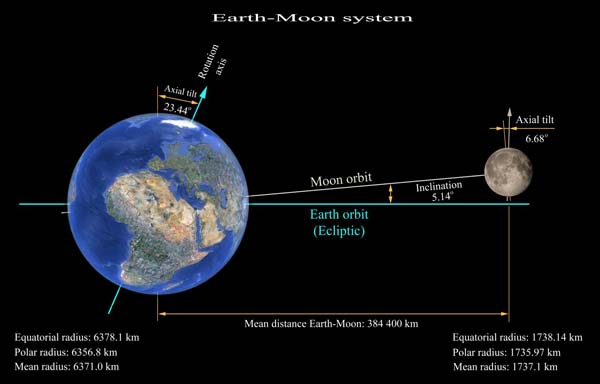To expand a little more, yes the Earth would hang in the same spot in the sky, moving around in a small circle as the moon rotated around it over the course of each of its 28 day orbits. It would have phases, full Earth when the moon is between it and the sun, new Earth when the Earth is between the moon and the sun, and wax and wane between these two points. Each time the Earth was full, a different part of it would be visible from the moon, depending on the season and how it happened to line up when full Earth occurred.
The Earth would roll in the sky according to the seasons on Earth and the precession of the moon's orbit. The moon tilts only 1.5 degrees from the ecliptic and so in essence has no seasons. The orbit of the moon is tilted 5 degrees from the ecliptic, so when it is farthest to the south of the plane of the solar system, more of the south of our planet is visible, and vice-versa when it is farthest north. But the Earth is tilted 23 degrees from the ecliptic, so this is what would mostly determine what part of it was visible from the moon. Here is a good summary of the relationship of the Earth and Moon. The distance between the two bodies is not to scale, but the relative size of the one to the other is to scale.

In December, Antarctica would be visible - as it was during the famous Blue Marble photo from Apollo 17, taken on Dec. 7, 1972.

(This version of the photo is supposed to be as it was in the original photograph. They took it on the way to the moon, so the orientation of the camera was the only thing that determined which way was 'up'. If you were on the moon at far southern latitudes, this is in fact how it would look from your point of view.)
In July, the Arctic would be visible. Apollo 11 took this photo on July 16, 1969, when they were half-way to the moon.

Here actually you don't see much of the Arctic. The moon's orbit had carried it a bit south of the Earth at that point. Heading to it meant going south a bit, so when they looked back at the Earth, they saw less of the far north.
Just to be clear, something you would NEVER see is this, which has been widely misunderstood as a photo of the whole planet from space. Actually it is a super-wide-angle photo taken from low earth orbit - the horizon line is for the part of the world the satellite could see, it is not one hemisphere of the Earth.

If you think about it for a second you realize this can't possibly be true. The United States is gigantic, if it was really this size Canada would occupy the whole arctic and roll over onto the other side of the world, displacing most of Russia. Argentina and Chile would take the place of Antarctica.








